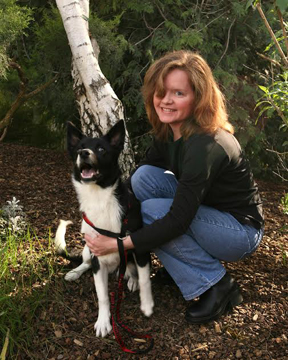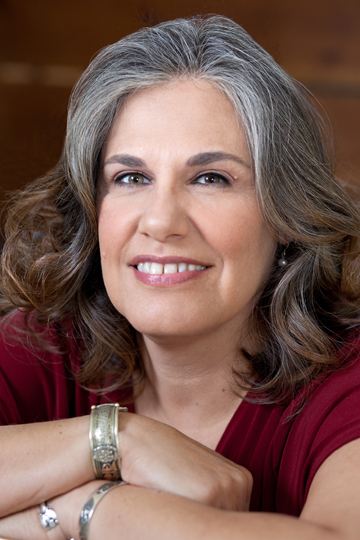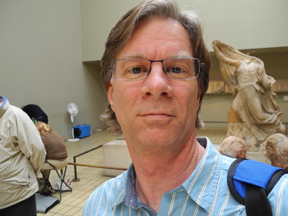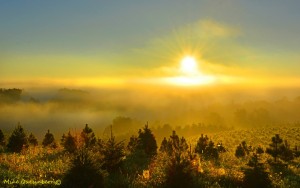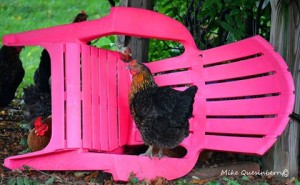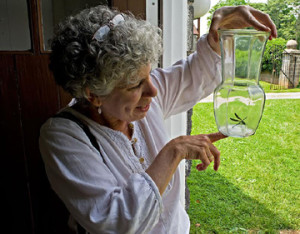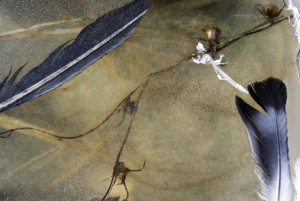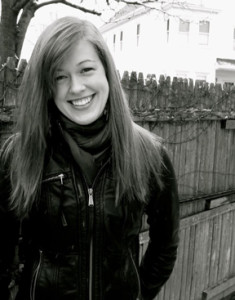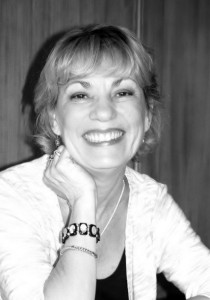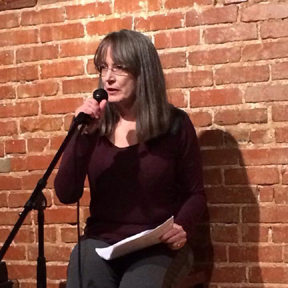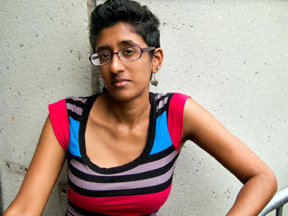
Mary Krienke: In your essay “I Am Always in Transition When Disaster Strikes,” you write about the 2004 Indian Ocean earthquake and tsunami that killed over 230,000 people in fourteen countries, with Indonesia being the hardest-hit country, followed by Sri Lanka, India, and Thailand. You also write about 9/11. I don’t need to give the stats on that one, which, of course, reveals so much. What I think you are writing about here, as you have touched on in some of your other writing, is that it can seem difficult for some to experience other people’s pain if that person does not look like them, does not have the same background, a similar-looking life. Do you think it is a conscious decision for people not to look or do you think it is a self-protective mechanism to create distance between them and those that are suffering? While it is a writer’s job to look at those difficult aspects of humanity and to bridge that distance, how does a writer successfully confront this resistance?
Vyshali Manivannan: It should go without saying that looking is hard. It leaves us vulnerable, speechless, guiltily ashamed of our comfortable lives, our failures to donate; it renders visible what we never want to see, the intimacy of a body destroyed mid-motion, ended without even a whimper. If we confront these images of death, we have to recognize that all bodies, laid open, are the same. We have to empathize or be labeled sociopath. We have to open ourselves to all the feelings described above. We can’t deny our culpability because when our troops kill, the corpses look like this too.
I’ve always, possibly to my detriment, chosen to look, because I felt guilty over my survivor’s guilt, feeling like I’d survived nothing; I wanted to simulate survival in the act of looking, and so I avidly consumed tragedy online. I can’t fault anyone for self-protection, whatever my own decisions are. But I think it’s crucial to be aware of why you’re choosing not to look. Two very opposed events come to mind: one, an article in The Onion about an everyman whose goal was to get through the Syrian conflict without reading so much as a single headline about it; and two, recent exhortations to refuse to view the beheading of journalist James Foley by ISIS. There’s an interesting contrast here, between the idea that not-looking equals willful ignorance, and the idea that we look to develop a tolerance for the grotesque. I think there’s room on this spectrum for a kind of looking that doesn’t glorify violence, doesn’t dwell on horror, but refigures the meaning of the image to an outcry against the ideologies that make such violence possible.
With regards to confronting the resistance to look, I think the first step is recognizing—before I even begin writing—that it’s not solely about the economy of taste and decency. There’s a whole network of practices that promote this resistance to looking: for instance, images of bodies are almost always bodies of foreigners in international situations presented as intractable or unsolvable, like the perpetual crisis in the Middle East, facilitating cultural indifference via cost-benefit analysis, practically telling us, “You can look, but looking won’t change anything, so why damage your psyche by looking?” So my first task is to change that evaluation and say, “Your looking at this will change something.” That something may be as invisible as ideology, but ideological change is paramount. It’s the first step in several regards: conflict resolution, post-conflict reconciliation, transitional justice measures, erasing the binary of Us and Them.
What’s left after that is to forge an emotional bond between readers and the narrator. Representing violence-in-process is, I think, an implosion of the moment itself, the individual experience of sense-making, and the tools used to do so, be they the Indian Ocean tsunami, HBO’s Tsunami, or the experience of watching both unfold.
MK: You are Sri Lankan American and you have family still living in Sri Lanka. You write about feeling both connected to and disconnected from a country you have visited twice in your life. You were born in New York and grew up in Louisiana and Missouri. You have written about feeling always outside of your own experience, that it is difficult to make something “your own.” In my experience of your writing, you respond to this sense of being an outsider by creating an identity that is always shifting, always evolving. How does this constant positioning and repositioning affect your writing?
VM: It’s my hope that this continual shifting of identity enables me to more accurately articulate, in writing, experiences that are mine, that are part of a larger collective experience marked by ethical and political variance, that I can’t claim as mine because I find it impossible to reconcile what I’ve survived with what victims of war have survived. Constantly repositioning myself mandates an acceptance of my struggles with hybridity and its associated grievances, and more importantly invites empathy with all parties involved. This repositioning ultimately strives to recognize Otherness and erase it in its tracks, to create humans where an “us” or “them” once stood, to deconstruct the binary and replace it with empathy and the possibility of reconciliation.
It’s strange to contrast it with my fiction process, because I think the goal is similar but the process itself is exacerbated, as it can only be achieved through inhabiting multiple characters and voices and playing out their interactions, whereas my nonfiction—with all its evolutions— ultimately feels more like the body I occupy in real life.
MK: You write a lot about the Sri Lankan Civil War, a conflict that was rarely covered in the U.S. media, until the endgame (and still then there was a media blackout and it was, as I recall, very rarely front-page news). Other international conflicts get consistent front-page coverage in the U.S., presumably because they are of “greater interest” or “relevance” to Americans. There always seems to be a privileging of one suffering over the other, a willingness to engage in one multi-faceted situation and not another. To me, it seems as though entire peoples, entire conflicts are invisible and that there is an effort to keep them that way. How do you address this in your work?
VM: Because the Sri Lankan conflict hits so close to home, I privately resent its invisibility in mainstream news. I’m sure I’m in the company of individuals who survived or grew up in the shadow of this or other conflicts. It was striking to me that Sri Lanka appeared in the news again at the precise moment its invisibility peaked, during the media blackout toward the war’s end, as though to suggest that absence is necessary to restore presence in the public eye. Like when it’s inaccessible, we want it.
I feel like in my work I’m constantly negotiating a balance between making conflict visible and asserting that it is worthy of visibility, that war doesn’t begin and end when the news media say so but simmers to a boiling point long before it explodes into Black July, or continues with refugees in camps, sexual abuses, privation, arbitrary detainment. We—be it countries or individuals—invest in conflicts that are the most worthwhile to us in terms of emotional costs, economic resources, cultural or political or physical similarity. There’s a concept known as “compassion fatigue,” where being inundated with stories and images of war in Gaza, Syria, Sudan, Libya, Ukraine, etc., etc., anesthetizes us to atrocity. But I think there’s more to it. While there’s some truth to inuring oneself through repeated viewing, as I’m prone to doing, it’s sort of a generalization that removes agency from the public, positioning the government and media as the purveyors of compassion. I want my writing to ask: Can we displace the register of compassion from governmental policy to public empathy, catalyzed not by war photographs (which never exist in isolation) but by intertextual narratives within a social, economic, political context at home and abroad.
And maybe that’s the best description of BLACK TIGER, WHITE VAN, which seeks to refigure the terms of looking—not at consequences but at violence in process, when intervention still seems possible, when we are more willing to engage.
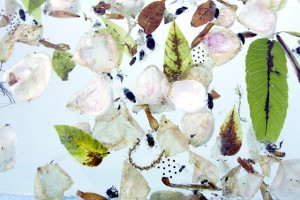
MK: You’ve had quite a few pieces from your larger work BLACK TIGER, WHITE VAN published in various journals. When I met you, I knew you only as a fiction writer. BLACK TIGER, WHITE VAN, much like this piece, touches on the unreliability of memory and how memory is as much fiction as nonfiction. It is clearly a painstaking process, trying to sort out conflicting reports, memories, feelings. In your fiction, do you feel an opportunity to step outside of this constant dissection? How do the process and its effects differ for you?
VM: To run with your surgical analogy, writing nonfiction like BLACK TIGER, WHITE VAN feels like an unrelenting debridement at my own hands, a crude attempt to scrape off the dead tissue of the past to preserve what’s left, to encourage the healing of wounds I’m still unwilling to fully own. It’s a process of recovery in and of itself. Not only does it insist that I confront past experiences that are emotionally difficult or potentially re-traumatizing—and I’m thinking specifically of a recent publication, “ThisIsMyManifesto.htm,” where the narrator simultaneously confesses to self-injury, attempted suicide, disability, queerness, and vicarious trauma—but it also demands that I make this experience accessible to strangers. So I’d say half of my nonfiction process is bracing myself for reopening old wounds, while the other half is craft: putting enough objective distance between myself and, say, the hallucinations I used to have, to find a way to make them as terrifyingly present to others as they were to me.
Fiction, on the other hand, feels like human vivisection with a defter touch, maybe because the lives I’m crafting ultimately aren’t mine even if they reflect aspects of my reality. It’s less a question of “How do I articulate this?” than “What makes this person tick?”In some ways there’s more research involved to create people who come to life for me, who move naturally through their environments. Problematic as it may be, I try to occupy their minds and spaces as much as possible, and I let them inhabit me. If I had to give you a breakdown, I’d say 80% of my fiction process is understanding these people in their ordinary circumstances; 10% is sadistic mental experimentation to gauge their behavioral changes and see what makes them move their worlds; and the rest is the writing itself. Once I’ve sorted out the characters and their motivations, the writing unfolds naturally, like a Borgesian map, mile-for-mile matched to my imagining.
So, to address your first question, neither process is outside dissection. Where my nonfiction process is an inward-looking deconstruction, my fiction is eternally stargazing, world-building, but keen to possibilities to take apart and exploit. I actually think both processes boil down to the same thing: the need to figure out why we do what we do in the face of adversity, when pushed to extremes. It’s still a contradiction. It’s like reaching with one hand for an Answer, capital-A, while with the other rejecting the notion of absolute Truth.
MK: I know from your mention of Harvey Dent in this piece and various Batman references in other pieces (and from our mutual obsession with all things Batman), that the Dark Knight holds a special place in your heart. For me, my fascination with Batman cannot be summed up in words. It’s a feeling of being drawn to something self-destructive yet noble. There is something to be said about the self-destructive and constructive process of writing. We pick ourselves (and oftentimes our loved ones) apart, put ourselves (and them) on the line, and hope it is a noble effort, one that outweighs the damage we do to ourselves and those we love. When I read your writing, I am stunned at how brave and singular your voice is. For you, whether in process or after the work is already finished, published, out of your hands, is there a moment of separation, when you can look at what you’ve done and see you have given up a part of yourself to save yourself, to maybe save someone else? Do you feel the sacrifice is worth it?
VM: I couldn’t describe it better than “self-destructive yet noble.” Maybe because of that awareness that I’m breaking the code of silence, exposing myself, my family, my friends to an unfamiliar readership, I have difficulty revisiting my work after publication. I’m forever asking my agent or a close friend to read it and remind me that it’s emotionally compelling; or I hesitate until people, without asking, tell me they were moved, or that reading the piece in question was like hearing their lives told back to them. I like to cite an experience in high school in the Bible belt, where a short story I wrote—interrogating sexuality and religion, mind you—made the rounds in the band room, and at least one person was so changed by it she has the hard copy to this day. More recently, a reader told me, “I love you for having survivor’s guilt. I love that it is an homage to those who didn’t get out.” Moments like those, I can close my critical eye and feel fulfilled.
So the short answer is yes, the sacrifice is worth it.
MK: I have known you for I think nine years at this point, and what strikes me about you, as well as your writing, is how you are always trying to find meaning in every detail, which is, I think, the mark of a great writer. The details are not superfluous, they are not accidents, they are not artistic flourishes. They are at the heart of it all. At what point did you realize that you were a bit obsessed with the details, and what do you think pushed you and continues to push you to obsessively turn these details over and try to fit them into a larger narrative?
VM: Given my background in science, role-playing games, and having to piece together an early understanding of the Sri Lankan war from details lifted out of context, I think I was always aware of the primacy of details. I understood scientific inquiry as revealing and explaining details; RPGs demonstrated that a single choice could permanently alter the narrative; and the Sri Lankan conflict was nothing but details because there was no larger narrative to guide me, I had to fashion my own. So I honestly can’t remember a time when I wasn’t obsessed with details. When I’m writing, I begin with a detail and extrapolate a reality: BLACK TIGER, WHITE VAN coalesced as a project when I caught myself repeatedly looking at the face of a Tiger cadre corpse, one of many in an unfilled trench; the novel I’m currently working on started with the shape of an astrocytoma and the proceedings from the First International Conference on psychotronics in Prague in 1974. Existence is an experience of contingency and intuition, I think, and I think this is emulated in my writing process, like making decisions of plot or symbolism on the fly only to discover, twenty pages later, that that tiny choice dictated something much larger. I have great faith that, by writing the details, I’ll intuit the larger narrative. It’s resulted in rewrites in the past, but it hasn’t really failed me yet.
MK: You write a lot about creating order amidst the disorder. Does the process of writing help create order or are there moments when it feels like the opposite, that the process of writing is just a reflection of the disorder of your own mind, the world around you? Or is it a constant fluctuation between the two?
VM: I never personally escape chaos. I experience moments, while writing, when the stars align and the disorder unfolds exactly as it should on the page, and all the seemingly arbitrary choices I’ve made so far—a character’s birth year, a physical attribute, a name—make sudden, blinding sense. But between sessions, or when I’m interrupted, I think my process of mental (re)composition does reflect a chaotic landscape. In that sense, it fluctuates. Additionally, when I write, I bounce all over the page, leaving unfinished lines or words as signposts to be revisited, knowing they won’t make the same kind of sense in a future writing session, but trusting that they will make a kind of sense, a semblance of order.
It’s almost as though the work and my mind can only operate in inverse: while I prefer to write in marathon sessions to retain the feeling that I am sense-making and creating order, approaching a work-in-progress after I’ve lost the thread forces me to be more mentally organized, if messier on the page; but taken all together I think it culminates in the expression of an order that is fractured, and does not eschew disorder, which I think is an essential part of being in the world.
Mary Krienke is an agent at Sterling Lord Literistic. She received her MFA in Fiction from Columbia University and represents literary fiction, creative nonfiction, and realistic YA that pays close attention to craft and voice. She is especially drawn to new and emerging writers who seek to push boundaries of form and content, and she responds most strongly to writing that reaches great emotional and psychological depths. She is equally interested in work that illuminates through humor or by playing with genre. Her other interests include psychology, art, and design.

